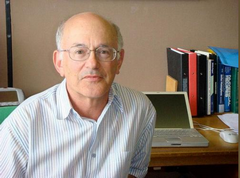Sidebar
Events Calendar
The Nature of Astronomical Discoveries
Although galaxies have been known since the time of Messier, no-one knew what they were until the 1920s. The essential information was in by 1915 and was understood by a few experts, but most of the scientific community was diverted for a decade by misinformation.
I am interested in the broader question: why do some discoveries, which appear in hindsight to be obviously major discoveries, have so little impact when they were made. This question comes up many times in the history of astronomy: famous examples include the nature of galaxies and the discovery of the expanding universe. Often, the credit for the discovery does not go to the right person.
This talk will cover some of these historical discoveries. I am interested in dark matter in the universe, so part of the talk will be on what we know about dark matter and how it was discovered. Again, the critical information was available many years before the community was able to understand the implications.

Kenneth Freeman
is Duffield Professor of Astronomy at the Australian National University (Research School of Astronomy & Astrophysics, Mount Stromlo Observatory) in Canberra. He studied mathematics at UWA and theoretical astrophysics at the University of Cambridge, followed by a postdoctoral year at McDonald Observatory (University of Texas) with G. de Vaucouleurs and a year as a fellow of Trinity College, Cambridge. He returned to Australia in 1967 as a Queen Elizabeth II Fellow at Mt Stromlo Observatory, and has been there ever since.
His research interests are in the formation and dynamics of galaxies and globular clusters, and particularly in the problem of dark matter in galaxies: he was one of the first to point out (1970) that spiral galaxies contain a large fraction of dark matter. More recently, he co-founded a new field of astronomy called Galactic Archaeology.
For his current research, he uses the optical and radio telescopes in Australia, and also observes with large optical telescopes in Spain, Chile, and Hawaii. He has written about 400 refereed research articles.
He was a Distinguished Visiting Scientist at the Space Telescope Science Institute in Baltimore for many years. He won the Dannie Heineman prize of the American Institute of Physics and the American Astronomical Society for 1999. In 2001, he was named by ISI as one of Australia's 35 most highly cited scientists. He won the Prime Minister's Prize for Science in 2012, the Matthew Flinders Medal of the Australian Academy of Science in 2013,
and was the Henry Norris Russell Lecturer (the American Astronomical Society's top prize) in 2013. In 2014 he won the international Gruber Prize for Cosmology.
He became a Fellow of the Australian Academy of Science (FAA) in 1981 and a Fellow of the Royal Society of London (FRS) in 1998. He serves on visiting committees and advisory boards for several major astronomical institutions around the world.
(Photo Credit: Emily Moylan)
